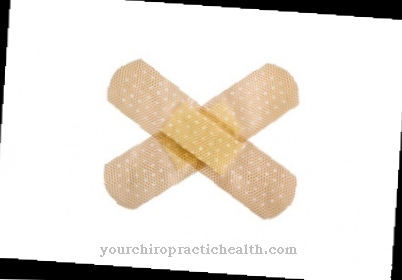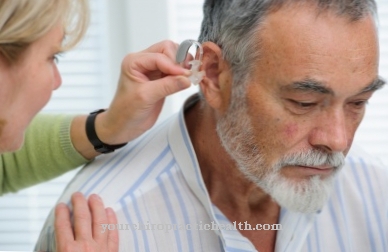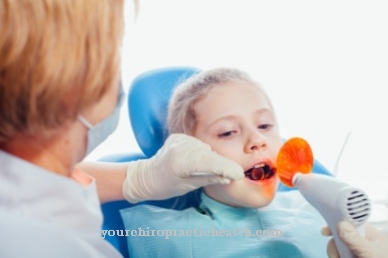Baby powder is a true all-rounder for some, a carcinogenic powder for others and a risk factor for the bronchi and ovaries. Because of its astringent effect, baby powder is often described as a dry shampoo, as an effective remedy for sweaty feet and hands, and as an effective preparation against acne, in addition to its actual purpose - the treatment of baby bottoms. Over 90% of baby powder products use talc, which is said to have asbestos-like and therefore carcinogenic properties. However, products made from corn starch do not contain any harmful ingredients.
What is baby powder?

Baby powder is popular for diaper rash because of its anti-inflammatory and absorbent properties. These are sores in the buttocks area that arise due to the excrement or hypersensitivity to the diaper. For many children, soreness is part of it in acute phases. Some suffer from these symptoms chronically, so baby powder is often not enough to treat the painful inflammation.
The very fine powder is applied to the cleansed baby skin and thus counteracts irritation and inflammation. Magnesium carbonate, zinc oxide and talc are used as the main ingredients. In particular, the ingredient talc is given a dominant role because of its moisture-removing effect. However, it is precisely this component that is often the subject of critical discussions.
Shapes, types & types
There are innumerable baby powders in drugstores, supermarkets, baby stores and health food stores. The major part contains 90% talc. The prices vary from just under € 2 to € 12. Due to the proven harmful effects of talc, some manufacturers are now turning to corn starch. This product is applied to the skin in a lotion-like form and also has a cooling effect. Its main component, Citroganix, provides the antiseptic effect and does not contain talc or parabens. The highlight: When applied to the skin, the lotion turns into powder.
The offers of some organic suppliers such as Weleda rely on medicinal herbs such as arnica, calendula and echinacea for the ingredients. Nevertheless, talc is also used here as the main component. At Bio Naturel and some other providers, the product baby powder has been completely removed from the range.
Structure & functionality
Baby powder consists mainly of talc. It is a very frequently used layered silicate that is extracted from soapstone. Its proportion in most baby powders is 90%. It is used for its astringent effect, which also has pore-reducing properties. Talc is absolutely moisture-resistant and is therefore often used in the pharmaceutical industry. Even the powder on chewing gum often contains talc. Due to the controversial discussion about talc, some manufacturers are now dispensing with the ingredient or have reduced its proportion. These changes in the products are not controlled by law.
Other ingredients are zinc oxide and magnesium carbonate. Zinc oxide is known for its antiseptic character, it soothes existing inflammation and prevents new irritation of the affected skin areas, such as further pimples and blackheads. Magnesium carbonate can absorb suppuration and wound secretions and is responsible for the powder's adhesion to the skin. At the same time, this component also absorbs excess moisture from the wound and thus dries out the sore spots.
Medical & health benefits
Baby powder is said to have anti-inflammatory, antiseptic and thus wound-regulating properties. There are now a large number of midwives who are critical of the use of classic baby powder and point out the alternative of potato flour.
The ingredient talc, which is often used in baby powders, has come under great criticism. For the past 30 years, researchers have found that talc particles can cause tumors in the ovaries and lungs. The inhalation of the fine powder particles by the newborn is said to have serious bronchial impairments as a consequence.
In recent years there have been repeated accidents when using the powder: The cans were accidentally emptied when opening and thus caused a serious risk to children due to large amounts being inhaled.The industry is now trying to counter this. Refill packs are no longer in the range and the openings of the cans have been made smaller.
If you want to use a product without talc, you can use lotions with corn starch. Only on the skin does the liquid powder turn into a powdery consistency and is made from 100% natural ingredients.
If you want to forego the use of baby powder for various reasons, you can fall back on other alternatives: Many mothers swear by the use of cornmeal, which is mixed with essential oils, harmless to health and above all - allergies excluded - without any side effects. It can be used immediately after production and can also be kept for a long time if stored dry.
There is also a large selection of wound protection creams available both in supermarkets and in organic shops. These are lotions and oils with marigold extract, chamomile or even beeswax and they should also have a wound healing effect. Midwives are increasingly recommending the alternative of potato flour, and the use of black tea (the cooled bag is simply dabbed on the affected areas of the skin) has already proven itself in many sore children.









.jpg)



.jpg)



.jpg)







.jpg)


